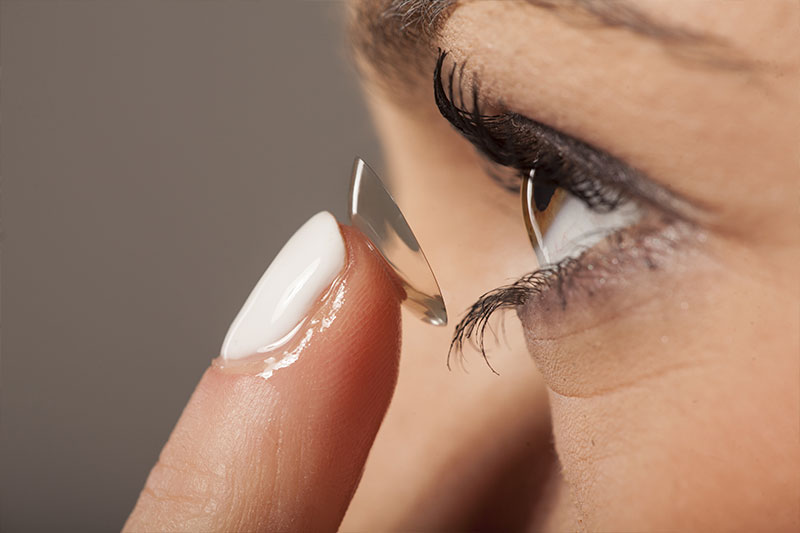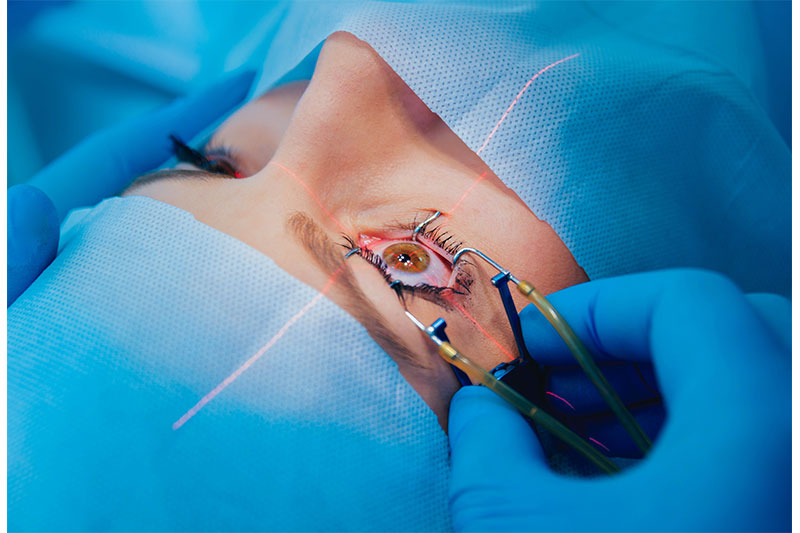It’s a lot easier to consider glasses a fashion staple when you don’t actually need to wear them. If you’re someone who has been wearing prescription glasses since childhood, you’ll probably remember some of the name calling not too fondly. Sure, people most likely don’t openly make fun of you anymore, but if you’re just tired of the ‘girl with glasses’ look, here are just a few ways you can get rid of them and not have to constantly bump into things.
Contact Lenses
Contact lenses are a popular alternative to glasses. They are each a thin lens that’s placed directly on the surface of the eye. They can be used cosmetically of course, because they come in different colours, but are also considered a medical device used to correct vision.
Other than being aesthetically pleasing, contacts allow for much better peripheral vision. They are affordable, comfortable and don’t cause an obstruction during activities such as playing sports. Furthermore, they don’t get smudged or wet in the rain.
Contact lenses need to be properly taken care of to prevent them from being damaged, as well as to prevent eye irritation. A case to store the lens is usually provided with the contacts, but if they aren’t, you can buy them separately. Use a reputable brand name contact lens solution to keep them clean. Note that it is not advisable to swim with contacts. Some are safe to sleep with, though it’s always better to remove your contacts beforehand.
Your Ophthalmologist is required to provide your contact lens prescription after a fitting. If they fail to do so, you can request it. Also, you can use your prescription to get new ones whenever you want at your regular opticians’ office or from a licensed contact lens retailer online.

Lasik Eye Surgery
Lasik eye surgery uses a laser to reshape the cornea of the eye. Lasik has become a very popular procedure and over 95% of patients are happy with their results. It is a permanent solution that will completely eradicate your dependence on glasses and even contact lenses. Technology has made it so that most eye defects such as Myopia (Nearsightedness), Hyperopia (Farsightedness) and Astigmatism (amongst others) can be permanently corrected.
You can consider Lasik as a way to get rid of your glasses if you are over 18; have had a stable prescription for glasses or contact lenses for up to two years; are not pregnant and don’t have excessively dry eyes. It’s also a good option if you don’t have a corneal disease or any other eye disease.
To perform the operation, a doctor uses a blade (microkeratome) or laser to cut a thin flap in the corneal tissue. A laser is then used to ablate corneal tissue and reshape the eye. Then, the flap is lowered and allowed to heal. The surgery is fast and can be completed in under ten minutes.
After the surgery, a bandage contact is usually placed on the eyes and protective eyewear is given to protect the eye from unwanted external stimuli, such as harsh rays of light or dust. It usually takes two to three months for Lasik flaps to heal completely. You’ll be able to see immediately after surgery and can resume your normal daily activities the very next day.
Special attention needs to be paid to the health of your eye during the healing process. It’s therefore important to follow doctor’s instructions to the letter to ensure you get the maximum desired results. Steroid and antibiotic eye drops are usually given to patients to be used post-surgery. Most Ophthalmologists would require return visits to make sure the healing process is going as it should. You might be required to return one day, one week and then one month after surgery.
Complications are rare, but some risks that can occur with Lasik include dry eyes, over or under correction and infection. You can read this eBook to get more information on Lasik.
SMILE Eye Surgery
SMILE (Small Incision Lenticule Extraction) is another permanent solution to nearsightedness. It is a laser vision correction method, similar to Lasik, but much gentler. Nearsightedness is a condition whereby objects close to the eye can be seen, but objects far away appear blurry and unfocused. This condition is caused by a lens and cornea that aren’t shaped properly. If you are nearsighted and don’t want to wear glasses, this is a great option.
After an eye test is conducted, the advanced technology helps determine the exact shape of the eye and gives the best options to correct vision for almost every eye shape. The laser treatment reshapes the lens and cornea, so that light can be focused properly at the back of the eye. The operation itself takes only about 30 seconds to perform.
The SMILE procedure doesn’t need to cut or enter the eye. The laser uses values that were computer generated during the eye test to make a thin layer just beneath the surface of the eye. A tiny opening is then created and the contact lens shaped layer is removed. The layer that the laser removes permanently reshapes the outer layers of the cornea, thus correcting the vision.
According to Sidney Gicheru, M.D, the procedure is performed with much less suction pressure than other laser vision correction options. It is also simple and painless. Patients can usually return to their daily activities and active lifestyle within days, unlike LASIK which is usually 1-2 weeks after the operation.

When choosing a vision correction method, it’s important to conduct thorough research. There are many factors to be considered, such as cost, reputation and success rate. When making your decision, you should go with the option that you’re most comfortable with, as recommended by your Ophthalmologist.
- A Guide On How To Host A Memorable Corporate Event - March 28, 2023
- How to Wear Y2K Fashion in 2022 - July 19, 2022
- How to Dress like A Pro: A Fashion Guide for Women Playing Golf - June 27, 2022
- How to Dress Like a Pro: A Fashion Guide for Men Playing Golf - June 15, 2022
- How Do You Get Started as a DJ? - May 20, 2022
- What are the Most Popular Furs for Coats, Jackets and Accessories? - February 28, 2022
- How You Can Look 10 Years Younger - September 30, 2021
- How To Give a Gift in Style: 4 Useful Tips - July 13, 2021
- How to enhance your work-wardrobe - June 3, 2021
- Choosing A Dentist: What You Need To Consider - May 27, 2021





